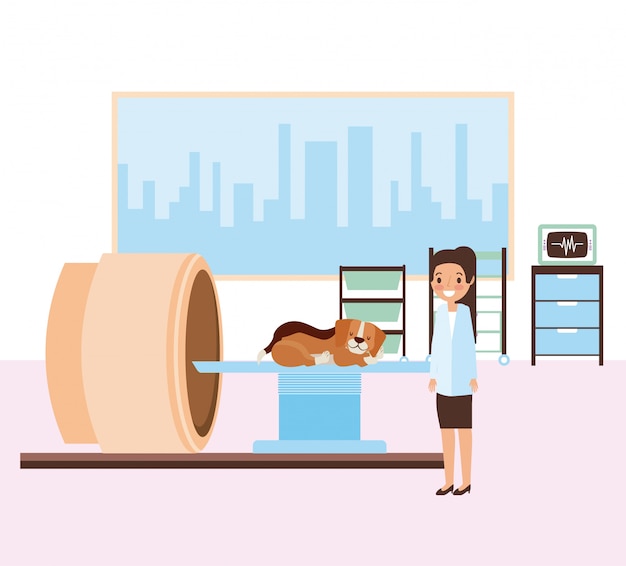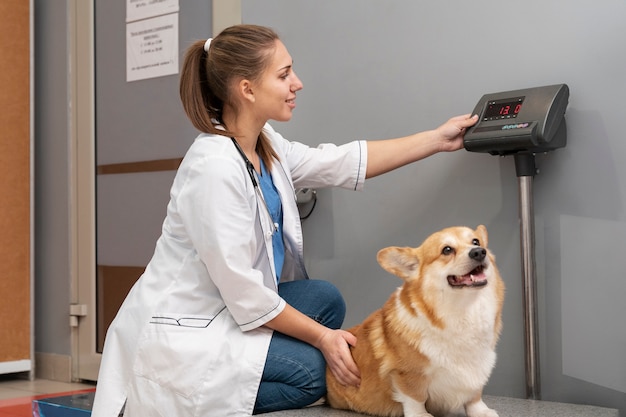Summer Hazards for Pets: When Imaging Reveals Hidden Dangers

Summer Hazards for Pets: When Imaging Reveals Hidden Dangers
Summer brings sunshine, outdoor adventures, and plenty of opportunities for pets and their families to enjoy the fresh air around Downers Grove and surrounding communities. While these warmer months are often a time of joy, they can also present hidden dangers for pets that are not always visible on the surface. At 4 Paws Imaging, located at 2581 Ogden Avenue, Downers Grove, IL 60515, our veterinary professionals understand how quickly summer pet health risks can escalate. Many issues, from heatstroke to internal injuries, require advanced diagnostic imaging to identify and treat effectively.
In this post, we will guide you through the most common summer pet health risks in Downers Grove, how imaging for heatstroke in pets and other conditions plays a vital role in diagnosis, signs that indicate your pet might need advanced imaging, and when to seek the expertise of a specialist vet near me. Whether you are a pet owner in Downers Grove or searching for veterinary diagnostics near me, understanding these risks can help you keep your furry family members safe all summer long.
Our team at 4 Paws Imaging works closely with local veterinary clinics to provide fast, reliable imaging services, helping both general practitioners and pet owners get answers when every moment counts. If you need more information about our specialized imaging offerings, you can discover more about our veterinary imaging services including ultrasounds, ECGs, and pregnancy scans by visiting our service overview.
Recognizing Summer Pet Health Risks: Signs That Warrant Advanced Imaging
Every summer, our veterinary professionals see a rise in cases where pets experience health problems linked to seasonal activities and heat exposure. While some symptoms are obvious, others may be subtle or hidden, making it critical to know when imaging can make all the difference.
Key symptoms that suggest an underlying problem may include persistent panting, sudden lethargy, vomiting, diarrhea, or difficulty walking after being outdoors. In some cases, pets may show signs like excessive drooling, weakness, or even collapse, which can point to heatstroke or internal injuries. Other concerns that might require imaging for heatstroke in pets include changes in breathing patterns, abdominal pain, or unexplained discomfort after a day at the park or near water.
It is important to remember that while a pet may seem to recover after resting in a cool place, internal injuries or organ damage can go unnoticed without specialized imaging. For pet owners in Downers Grove and surrounding communities, recognizing these warning signs early can lead to faster diagnosis and better outcomes.
When to Suspect Hidden Injury or Illness
Some scenarios warrant extra vigilance. For example, if your dog has been active in hot weather and then suddenly seems disoriented or unresponsive, or if a cat spends hours outdoors and returns with signs of pain or swelling, these can be indicators of underlying health problems. Even minor accidents, such as slipping on wet patios or ingesting foreign objects during picnics, may result in injuries that only advanced diagnostic imaging can reveal.
If you notice any unusual behaviors or symptoms in your pet during summer activities, it is essential to consult your veterinarian promptly. They may refer you to a specialist vet near me, such as the team at 4 Paws Imaging, for further evaluation.
Understanding the Causes: Why Summer Brings Hidden Dangers
Summer pet health risks often stem from a combination of environmental factors and increased activity levels. The warm, humid climate in Downers Grove can quickly lead to overheating, especially in brachycephalic (short-nosed) breeds, senior pets, or those with underlying medical conditions.
Heatstroke is one of the most dangerous yet preventable conditions seen in pets during the summer. It occurs when a pet’s body temperature rises rapidly, overwhelming their ability to cool down. Contributing factors include being left in parked cars, prolonged exercise without access to water, or exposure to hot pavement. In addition to heatstroke, pets are at risk for injuries such as sprains, fractures, and ingestion of non-food items during cookouts or gatherings.
The risk of internal injuries increases when pets are allowed to swim unsupervised or play roughly with other animals. Hidden dangers may also arise from exposure to chemicals like lawn treatments or ingesting toxic plants commonly found in gardens.
Imaging for heatstroke in pets and other summer-related issues is critical because many of these dangers result in changes that are not visible externally. For example, heatstroke can lead to organ swelling or bleeding, which can only be accurately identified through diagnostic imaging. Similarly, a dog that swallows a bone or toy may be at risk for gastrointestinal blockage, which can be visualized with abdominal X-rays or ultrasounds. To learn more about how abdominal ultrasounds can help in these situations, you can visit our page on abdominal ultrasounds.
Imaging for Heatstroke and Summer Injuries: What to Expect from Specialty Diagnostics
When your family veterinarian suspects a summer-related condition that requires advanced evaluation, they may refer you to a specialist vet near me for comprehensive imaging. At 4 Paws Imaging, our focus is on providing precise, timely answers that help guide the best possible care for your pet.
Diagnostic imaging plays a central role in assessing heatstroke and other summer pet health risks. Imaging for heatstroke in pets often involves a combination of X-rays, ultrasounds, and sometimes CT scans, depending on the organs affected and the severity of symptoms. Ultrasound can detect changes in the heart, liver, kidneys, and gastrointestinal tract, while X-rays are invaluable for identifying fractures, foreign bodies, or lung changes due to overheating.
During an evaluation, your pet may undergo abdominal or cardiac ultrasound if there are concerns about organ function. For example, our echocardiogram ultrasound screenings allow board-certified cardiologists to assess heart health in pets showing signs of distress after intense summer play. In cases where ingestion of non-food items is suspected, imaging can quickly pinpoint the location and nature of the blockage, allowing for prompt intervention.
The imaging process is typically non-invasive and designed to minimize stress for your pet. Our veterinary team works closely with referring veterinarians to interpret results and recommend appropriate next steps, whether that involves immediate treatment or close monitoring.
How Imaging Guides Treatment Decisions
The information gathered through advanced imaging helps determine whether your pet needs medical management, surgery, or supportive care. For example, if a heatstroke case reveals organ swelling or bleeding, your veterinarian can tailor treatment plans with greater accuracy. In the case of foreign body ingestion, imaging guides both the urgency and method of removal.
By partnering with a specialist vet near me for these evaluations, you are ensuring your pet receives the highest standard of care, especially when time is of the essence.
Preventing Summer Pet Health Risks: Practical Steps for Pet Owners
While not all summer hazards can be avoided, proactive measures can greatly reduce your pet’s risk of heat-related illness and injury. Always provide access to fresh water and shade, limit outdoor activities during peak heat, and never leave pets unattended in parked vehicles. Watch for early signs of heat stress, such as excessive panting and drooling, and bring your pet indoors if they appear uncomfortable.
When planning outdoor adventures, inspect your yard and local parks for potential hazards like sharp objects, toxic plants, or leftover food. Supervise pets around pools and lakes, and avoid strenuous play during the hottest parts of the day. For pets with known health conditions, consult your veterinarian about safe activity levels and whether specialized monitoring may be needed.
Regular check-ups with your primary veterinarian can also help identify underlying issues that might increase your pet’s vulnerability in the summer. They may recommend referral for veterinary diagnostics in Downers Grove if unexplained symptoms arise during the season.
When to Seek Advanced Veterinary Imaging: Knowing the Right Moment
Knowing when to seek veterinary diagnostics near me can make a lifesaving difference. If your pet shows persistent symptoms after heat exposure, such as rapid breathing, stumbling, or unresponsiveness, immediate evaluation is crucial. Other warning signs include ongoing vomiting or diarrhea, abdominal swelling, unexplained pain, or sudden behavioral changes after outdoor activities.
Your primary veterinarian is the first point of contact for most concerns, but if they believe advanced imaging is needed, they will refer you to a specialist vet near me such as 4 Paws Imaging. Our veterinary team is equipped to provide fast, detailed assessments using state-of-the-art equipment, ensuring your pet receives the most comprehensive care possible.
If you are ever uncertain about your pet’s health during summer months, it is always safer to err on the side of caution and seek professional guidance. The ability to access veterinary diagnostics near me quickly can prevent minor issues from becoming serious emergencies.
Conclusion: Protecting Your Pet with Advanced Imaging This Summer
Summer should be a time of happiness and adventure for you and your pets, not worry and uncertainty. By staying informed about summer pet health risks and understanding when imaging for heatstroke in pets is necessary, you can act swiftly to safeguard your furry companion’s well-being. The experienced veterinary professionals at 4 Paws Imaging are committed to working with your primary veterinarian to deliver precise, compassionate care when it matters most.
If your pet is showing signs of distress or you are concerned about hidden injuries after summer activities, do not hesitate to ask your veterinarian about referral to a specialist vet near me. Our team at 2581 Ogden Avenue, Downers Grove, IL 60515 is here to help pets throughout Downers Grove and surrounding communities. For more details on our full suite of services, including ultrasounds, ECGs, and pregnancy scans, explore our veterinary imaging services.
If your veterinarian believes your pet may benefit from advanced imaging, or if you are searching for a specialist vet near me, contact our knowledgeable team at (630) 746-1382. We are dedicated to providing the answers you need for peace of mind, so you and your pet can enjoy a safe, happy summer together.

















